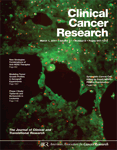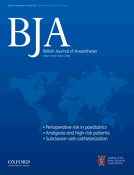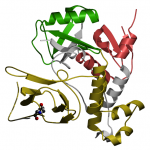Detecting a door or a window may not be a big deal for all of us with normal vision, but for those who lose their sight, e.g. through retinitis pigmentosa (RP), a new “artificial retina” now provides hope of a better quality of life.
The Argus™ II Retinal Prosthesis System from California based company Second Sight, has just received CE marking. This innovative device can now be sold and marketed within Europe, but it remains investigational in the United States. It is the first such device to be approved.
While this blog is mainly focused on the biotechnology industry, I’m very interested in innovation and bringing novel products to market. I also have a personal interest in the ophthalmology market. Earlier in my career, I spent three years at Alcon working with leading European ophthalmologists on intra-ocular lens clinical trials, including the IDE registration trial for AcrySof®.
In the same way that a cochlear implant does not restore hearing, the “artificial retina” or so-called “bionic eye” from Second Sight is not intended to restore vision, instead it artificially provides electrical signals that it is hoped the brain can learn to interpret as shapes.
The “artificial retina” has three parts, a small video camera worn in a pair of glasses that captures visual images. This transmits the electronic images to a video processing unit worn by the patient. Data is then transmitted wirelessly to an implant that is located on top of the retina.
The array of electrodes resting on the retina stimulates those rods and cones that remain functional to generate electrical impulses that are then transmitted down the optic nerve to the brain. Patients learn to interpret the patterns of light that are generated, and in the process gain some sense of visual perception that improves their daily life.
In an interview broadcast on French radio station, RTL one of the four French patients in the clinical trial, Thierry, talks about how this retinal stimulation device has improved his autonomy and quality of life.
When faced with blindness, any progress is noteworthy and it will be interesting to see the extent to which this technology can be further developed. I expect that more clinical trial data will be forthcoming at the annual meeting of ARVO (Association for Research in Vision and Ophthalmology) in May.
Update August 23, 2012: FDA Panel to review whether to recommend of approval of Argus II artificial retina in the United States
The FDA Ophthalmic Devices Panel will review on September 28, 2012 the Humanitarian Device Exemption (HDE) market approval application by Second Sight for its Argus II Retinal Prosthesis System with an indication for patients with severe to profound retinitis pigmentosa (RP) who have bare or no light perception in both eyes.
What is a Humanitarian Device Exemption?
“An HDE is similar in both form and content to a premarket approval (PMA) application, but is exempt from the effectiveness requirements of a PMA. An HDE application is not required to contain the results of scientifically valid clinical investigations demonstrating that the device is effective for its intended purpose. The application, however, must contain sufficient information for FDA to determine that the device does not pose an unreasonable or significant risk of illness or injury, and that the probable benefit to health outweighs the risk of injury or illness from its use, taking into account the probable risks and benefits of currently available devices or alternative forms of treatment.” U.S. Food & Drug Administration
Given the lower standard required for a HDE, and the fact that Second Sight obtained a CE mark in Europe, it would be hard to believe the FDA advisory panel will not recommend approval in a patient population that are effectively blind.
However, the FDA guidance also notes that an approval of an HDE, while allowing marketing of the device, does require it’s use to be at facilities where an institutional review board (IRB) has approved the use of the device. If approved for sale in the US, the market for Second Sight will be limited as a result to academic and hospital settings that have an IRB able to provide the necessary oversight and review.
“An approved HDE authorizes marketing of the HUD. However, an HUD may only be used in facilities that have established a local institutional review board (IRB) to supervise clinical testing of devices and after an IRB has approved the use of the device to treat or diagnose the specific disease. The labeling for an HUD must state that the device is an humanitarian use device and that, although the device is authorized by Federal Law, the effectiveness of the device for the specific indication has not been demonstrated.”
For those interested in more information, background material on the HDE application will be available on the FDA website no later than 2 days prior to the September 28 meeting of the Ophthalmic Devices Panel of the Medical Devices Advisory Committee.
![]() Raya-Rivera, A., Esquiliano, D., Yoo, J., Lopez-Bayghen, E., Soker, S., & Atala, A. (2011). Tissue-engineered autologous urethras for patients who need reconstruction: an observational study The Lancet DOI: 10.1016/S0140-6736(10)62354-9
Raya-Rivera, A., Esquiliano, D., Yoo, J., Lopez-Bayghen, E., Soker, S., & Atala, A. (2011). Tissue-engineered autologous urethras for patients who need reconstruction: an observational study The Lancet DOI: 10.1016/S0140-6736(10)62354-9

 I was recently in San Francisco so thought I would continue my theme of writing about biotechnology regions that I visit around the United States.
I was recently in San Francisco so thought I would continue my theme of writing about biotechnology regions that I visit around the United States.